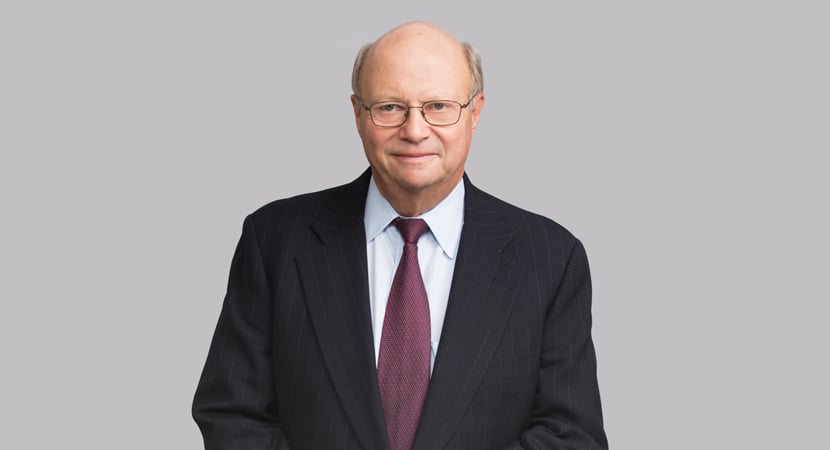In trademark suit in which jury found defendant liable on all three counts of trademark violations and awarded plaintiff Hermès damages for defendant’s use of Birkin mark in his “MetaBirkin” NFTs, district court denies defendant’s post-trial motions for judgment as matter of law or new trial and grants plaintiff’s request for permanent injunction.
Plaintiff, luxury fashion house Hermès, owns trademark and trade dress rights in the name and design, respectively, of the iconic Birkin handbag. In December 2021, defendant Mason Rothschild (real name: Sonny Estival) created a collection of digital images he named “MetaBirkins,” each of which depicted an image of “a blurry faux-fur-covered Birkin handbag.” Rothschild used non-fungible tokens (NFTs) to sell the digital images to individual buyers. Each of the NFTs represented sole ownership of a particular MetaBirkin, i.e., a unique digital image of a Birkin handbag rendered by defendant. In response, Hermès brought suit asserting claims for trademark infringement, trademark dilution, cybersquatting and unfair competition. After a nine-day trial, a jury returned a unanimous verdict in favor of Hermès, finding defendant liable on all three counts of trademark violation and awarding Hermès $133,000 in damages. The jury found that defendant purposely sought to confuse consumers into believing that his MetaBirkin NFTs and his associated website, metabirkins.com, were affiliated with Hermès’ iconic Birkin trademarks.
After the jury returned its verdict, both parties filed motions. Defendant asked the district court to enter judgment as a matter of law in his favor, or, in the alternative, order a new trial; in a separate motion, defendant requested leave to interview the foreperson of the jury and other jurors because of what defendant claimed to be “a substantial possibility that the jurors considered material, prejudicial, and erroneous information outside the record in reaching their verdict.” Hermès, on the other hand, sought to personally enjoin Rothschild from taking certain actions that have enabled Rothschild to continue infringing and diluting their trademark. The district court denied Rothschild’s two motions and granted Hermès’ permanent injunction.
In its motion for judgment as a matter of law or a new trial, Rothschild argued that the jurors could not properly perform their function because the jury instructions given by the court were legally deficient in both structure and substance. The court rejected both arguments. Defendant argued that the sequencing of the instructions misled the jury into viewing the First Amendment as a defense against or excuse to liability. The court instructed the jury about the essential elements of Hermès’ claims, then instructed the jury that Hermès’ failure to prove any of these elements was enough to deny Hermès’ claims and that, even if Hermès proved these elements, Hermès still must prove that Rothschild’s conduct was not covered by the First Amendment protection of artistic expression. The court concluded that “the most logical way to structure the instructions was precisely the way the [c]ourt did it.” In fact, prior to consenting to the instructions, defense counsel had insisted that the court revise them to clarify that the First Amendment was not a defense but rather that the “burden remain[ed] with [Hermès] at all times” to prove that defendant’s NFTs “did not fall within the Amendment’s scope.” In response to a question from the jury as to whether defendant could still sell the MetaBirkin NFTs if found not to be liable on First Amendment grounds, the court reinforced the instruction by directing the jury to “focus exclusively on whether Hermès had proved that Rothschild’s ‘MetaBirkins NFTs’ were not entitled to First Amendment protection and to disregard any consequences that would attach to their determination.”
Rothschild also argued that the substance of the instructions misstated the law. The court called this argument “just as unpersuasive as his structural argument,” noting that the instructions were “more favorable to[ Rothschild] than the law even required.” In particular, the court instructed the jury that Rothschild could not be found liable for any of Hermès’ claims unless Hermès proved that Rothschild “actually intended to confuse potential customers into believing that Hermès was associated” with his NFTs, as opposed to only “objectively misleading potential customers.” Critical for this inquiry is determining whether defendant used Hermès’ mark to “advance an artistic purpose” or to exploit Hermès’ goodwill. The court observed that both defendant’s website metabirkins.com and his MetaBirkins NFTs used Hermès’ trademarks as trademarks, to identify source—in which case, following the U.S. Supreme Court’s more recent ruling in Jack Daniel’s Properties, decided after the trial in the instant case, the Rogers test should no longer even apply.
In this motion, Rothschild also argued that no reasonable jury could have found that he was liable on Hermès’ trademark claims after applying the Polaroid factors. The court swiftly rejected this argument as not “remotely persuasive.” In particular, the court noted that Rothschild only challenged the evidence Hermès presented in support of its argument for actual confusion; the court explained that this single Polaroid factor need not be shown to prevail. The court concluded that a reasonable juror could have found Rothschild liable because the other Polaroid factors weighed against him.
The court summarily dismissed defendant’s remaining grounds for judgment as a matter of law or a new trial, among them defendant’s request for reconsideration of the decision that Hermès’ claims were not barred by the Dastar decision, noting that the Yuga Labs, Inc. v. Ripps decision adopted the same reasoning as the Court here.
In its motion, Hermès sought to specifically enjoin Rothschild in seven ways: (1) to discontinue his use of the Birkin marks specifically, and to refrain generally from misleading the public about an association between his NFT project and Hermès; (2) to transfer to Hermès the domain name metabirkins.com and the related social media accounts featuring the Birkin mark; (3) to transfer any MetaBirkins NFTs in his possession and the related smart contracts associated with the NFTs to a cryptocurrency wallet controlled by Hermès; (4) to notify Hermès of any income received from the MetaBirkins NFTs and transfer that income to Hermès; (5) to notify anyone who purchased a MetaBirkins NFT of the relief described in the issued permanent injunction; (6) to file a declaration confirming his compliance with the injunction within 31 days of the entry of the order; and (7) to preserve documents related to the lawsuit.
The court found that Hermès satisfied the four threshold requirements for a permanent injunction articulated in the Supreme Court’s 2006 decision in eBay Inc. v. MercExchange, L.L.C., namely that (1) Hermès suffered an irreparable injury, (2) the remedies available at law are inadequate, (3) considering the balance of hardships between Hermès and Rothschild, a remedy in equity is warranted, and (4) the public interest would not be disserved by a permanent injunction. With respect to the first factor, the court noted that under the Trademark Modernization Act of 2020 (TMA), Hermès is entitled to a rebuttable presumption of irreparable harm by virtue of the jury’s verdict in favor of their trademark infringement claim and because of Hermès’ success on the merits of its dilution claims, and concluded that defendant has not met the showing required to overcome these presumptions. On the question of the adequacy of remedies at law, the court was convinced that monetary relief could not adequately compensate Hermès for the ongoing harm it suffered, based on undisputed evidence that Rothschild continued to promote and execute the sales of MetaBirkins. Rothschild argued, with respect to the third factor, that an injunction ordering transfer of the NFTs to Hermès would “destroy the property rights of bona fide, good faith purchasers of [the NFTs] who are not parties to this case.” Noting that the third eBay factor does not contemplate balancing harms to third parties but only as between the parties, and that, in any event, Hermès had not requested transfer of NFTs from third parties but only from defendant and his associates, the court concluded that Rothschild had not identified a cognizable hardship to himself that outweighed the harm to Hermès. Rounding out the factors, the court found that Hermès had shown that the public interest would not be disserved by a permanent injunction because the public has an interest in not being confused about the origin of an artwork, as much as it has an interest in not being confused about the origin of a consumer product. The court also rejected Rothschild’s argument that Hermès’ bad faith and dishonest conduct barred any injunctive relief, finding no evidence of bad faith on Hermès part.
The court granted Hermès’ request for permanent injunctive relief, including prohibiting Rothschild from using the Birkin marks or otherwise misleading the public about the source of the MetaBirkins NFTs. While it ordered that defendant transfer the metabirkins.com domain name and related materials to Hermès, the court did not order the transfer of the NFTs and smart contracts, reasoning that the narrower injunction remedies any “continued consumer confusion while avoiding any potential constitutional problems because the MetaBirkins NFTs are at least in some respects works of art.” In addition, while Hermès had shown that defendant had continued to market, sell and collect royalties from the NFTs, this past conduct does not necessarily predict his future violation of the injunction once entered. If Rothschild were to violate the injunction, Hermès would have remedies for that conduct in both law and equity, including requesting that the court hold defendant in civil or criminal contempt.
The court also entered an order requiring defendant to “disgorge any profits he derived from the MetaBirkins NFTs since the beginning of trial to the present day, which includes royalties, transfer income, or other financial benefits that he received from resales of the NFTs,” based on the “unequivocal [verdict] that Rothschild purposely intended to confuse the public into thinking there was an association between his project and Hermès.”
Noting that the remaining relief requested by Hermès was either unchallenged by Rothschild or uncontroversial, the court ordered Rothschild to communicate the details of the purchasers of the NFTs, and provide Hermès with written confirmation of his compliance with the order within 31 days. Both Rothschild and Hermes were ordered to preserve documents related to the lawsuit.
Finally, Rothschild’s motion for leave to question the foreperson and other jurors was “perhaps his most frivolous.” In contrast to the “clear, strong, substantial and incontrovertible” evidence required to support this measure of extraordinary relief, the court highlighted “the absence of even a shred of concrete evidence” to support plaintiff’s “breathtaking leap of logic” that the jurors considered material, prejudicial and erroneous information outside the record in reaching their verdict.
Summary prepared by Melanie Howard and Jennifer Kahn
-
 Associate
Associate
)




